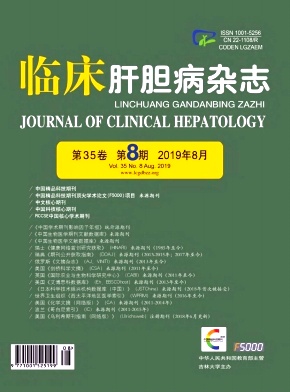|
[1] MANIOTIS AJ, FOLBERG R, HESS A, et al. Vascular channel formation by human melanoma cells in vivo and in vitro:Vasculogenic mimicry[J]. Am J Pathol, 1999, 155 (3) :739-752.
|
|
[2] XIA Y, CAI XY, FAN JQ, et al. The role of sema4D in vasculogenic mimicry formation in non-small cell lung cancer and the underlying mechanisms[J]. Int J Cancer, 2019, 144 (9) :2227-2238.
|
|
[3] ZHAO X, SUN B, LIU T, et al. Long noncoding RNA n339260promotes vasculogenic mimicry and cancer stem cell development in hepatocellular carcinoma[J]. Cancer Sci, 2018, 109 (10) :3197-3208.
|
|
[4] SHEN Y, QUAN J, WANG M, et al. Tumor vasculogenic mimicry formation as an unfavorable prognostic indicator in patients with breast cancer[J]. Oncotarget, 2017, 8 (34) :56408-56416.
|
|
[5] WILLIAMSON SC, METCALF RL, TRAPANI F, et al. Vasculogenic mimicry in small cell lung cancer[J]. Nat Commun, 2016, 7:13322.
|
|
[6] CHENG Y, OU K, ZHU WT, et al. Role and mechanism of vasculogenic mimicry induced by CCL21-CCR7 in micrometastasis of hilar cholangiocarcinoma[J]. World Chin J Dig, 2014, 22 (22) :3274-3280. (in Chinese) 成雨, 欧琨, 朱文涛, 等. CCL21-CCR7诱导血管生成拟态形成在肝门部胆管癌微转移中的作用及机制[J].世界华人消化杂志, 2014, 22 (22) :3274-3280.
|
|
[7] GALLUZZI L, BAEHRECKE EH, BALLABIO A, et al. Molecular definitions of autophagy and related processes[J]. EMBO J, 2017, 36 (13) :1811-1836.
|
|
[8] QU X, SHENG J, SHEN L, et al. Autophagy inhibitor chloroquine increases sensitivity to cisplatin in QBC939 cholangiocarcinoma cells by mitochondrial ROS[J]. PLo S One, 2017, 12 (3) :e0173712.
|
|
[9] GREEN DR. To be or not to be? How selective autophagy and cell death govern cell fate[J]. Cell, 2014, 157 (1) :65-75.
|
|
[10] LIU W, LV C, ZHANG B, et al. MicroRNA-27b functions as a new inhibitor of ovarian cancer-mediated vasculogenic mimicry through suppression of expression[J]. RNA, 2017, 23 (7) :1019-1027.
|
|
[11] ZENG F, JU RJ, LIU L, et al. Application of functional vincristine plus dasatinib liposomes to deletion of vasculogenic mimicry channels in triple-negative breast cancer[J]. Oncotarget, 2015, 6 (34) :36625-36642.
|
|
[12] IZAWA Y, KASHII-MAGARIBUCHI K, YOSHIDA K, et al.Stem-like human breast cancer cells initiate vasculogenic mimicry on matrigel[J]. Acta Histochem Cytoc, 2018, 51 (6) :173-183.
|
|
[13] HAEFEN C, SIFRINGER M, MENK M. Ethanol enhances susceptibility to apoptotic cell death via down-regulation of autophagy-related proteins[J]. Alcohol Clin Exp Res, 2011, 35 (8) :1381-1391.
|
|
[14] YANG J, ZHU DM, ZHOU XG, et al. HIF-2αpromotes the formation of vasculogenic mimicry in pancreatic cancer by regulating the binding of Twist1 to the VE-cadherin promoter[J]. Oncotarget, 2017, 8 (29) :47801-47815.
|
|
[15] LIU ZY. Role and molecular mechanism of ZEB1 in vasculogenic mimicry formation in colon cancer[D]. Tianjin:Tianjin Medical University, 2012. (in Chinese) 刘志勇. ZEB1在结肠癌血管生成拟态形成中的作用及分子机制探讨[D].天津:天津医科大学, 2012.
|
|
[16] PUSHPAKUMAR SB, KUNDU S, METREVELI N, et al. Matrix metalloproteinase inhibition mitigates renovascular remodeling in salt-sensitive hypertension[J]. Physiol Rep, 2013, 1 (3) :e00063.
|
|
[17] RUIZ A, ROCKFIELD S, TARAN N, et al. Effect of hydroxychloroquine and characterization of autophagy in a mouse model of endometriosis[J]. Cell Death Dis, 2016, 7:e2059.
|
|
[18] ZHANG S, LI M, ZHANG D, et al. Hypoxia influences linearly patterned programmed cell necrosis and tumor blood supply patterns formation in melanoma[J]. Lab Invest, 2009, 89 (5) :575-586.
|
|
[19] SHAO B, ZHAO X, LIU T, et al. LOXL2 promotes vasculogenic mimicry and tumour aggressiveness in hepatocellular carcinoma[J]. J Cell Mol Med, 2019, 23 (2) :1363-1374.
|
|
[20] ZHANG J, DENG G, QIAO L, et al. Effect of galectin-3 on vasculogenic mimicry in esophageal cancer cells[J]. Oncol Lett, 2019, 17 (1) :719.
|
|
[21] HAN C, SUN B, WANG W, et al. Overexpression of microtubule-associated protein-1 light chain 3 is associated with melanoma metastasis and vasculogenic mimicry[J]. Tohoku J Exp Med, 2011, 223 (4) :243-251.
|
|
[22] DING YP, YANG XD, WU Y. Autophagy promotes the survival and development of tumors by participating in the formation of vasculogenic mimicry[J]. Oncol Rep, 2014, 31 (5) :2321-2327.
|
|
[23] MIGUEL-ALIAGA I. Nerveless and gutsy:Intestinal nutrient sensing from invertebrates to humans[J]. Semin Cell Dev Biol, 2012, 23 (6) :614-620.
|
|
[24] MATSTU T. Rab12 regulates m TORC1 activity and autophagy through controlling the degradation of amino-acid transporter PAT4[J]. EMBO Rep, 2013, 14 (5) :450-457.
|
|
[25] FAN SJ, SNELL C, TURLEY H, et al. PAT4 levels control amino-acid sensitivity of rapamycin-resistant m TORC1 from the Golgi and affect clinical outcome in colorectal cancer[J]. Oncogene, 2016, 35 (23) :3004-3015.
|
|
[26] YEH YH, HSIAO HF, YEH YC, et al. Inflammatory interferon activates HIF-1α-mediated epithelial-to-mesenchymal transition via PI3K/AKT/m TOR pathway[J]. J Exp Clin Canc Res, 2018, 37 (1) :70.
|
|
[27] ZHU ZB, YE LS, ZHENG CX. The role of PI3K/Akt signaling pathway in cholangiocarcinoma[J/CD]. Chin J Hepat Surg:Electronic Edition, 2016, 5 (5) :330-333. (in Chinese) 朱泽斌, 叶林森, 郑朝旭. PI3K/Akt信号通路在胆管癌中的作用[J/CD].中华肝脏外科手术学电子杂志, 2016, 5 (5) :330-333.
|
|
[28] LIU Z, WANG F, ZHOU ZW, et al. Alisertib induces G/M arrest, apoptosis, and autophagy via PI3K/Akt/m TOR-and p38 MAPK-mediated pathways in human glioblastoma cells[J]. Am J Transl Res, 2017, 9 (3) :845-873.
|
|
[29] CHIABLAEM K, LIRDPRAPAMONGKOL K, KEERATICHAMROEN S, et al. Curcumin suppresses vasculogenic mimicry capacity of hepatocellular carcinoma cells through STAT3 and PI3K/AKT inhibition[J]. Anticancer Res, 2014, 34 (4) :1857-1864.
|







 DownLoad:
DownLoad: